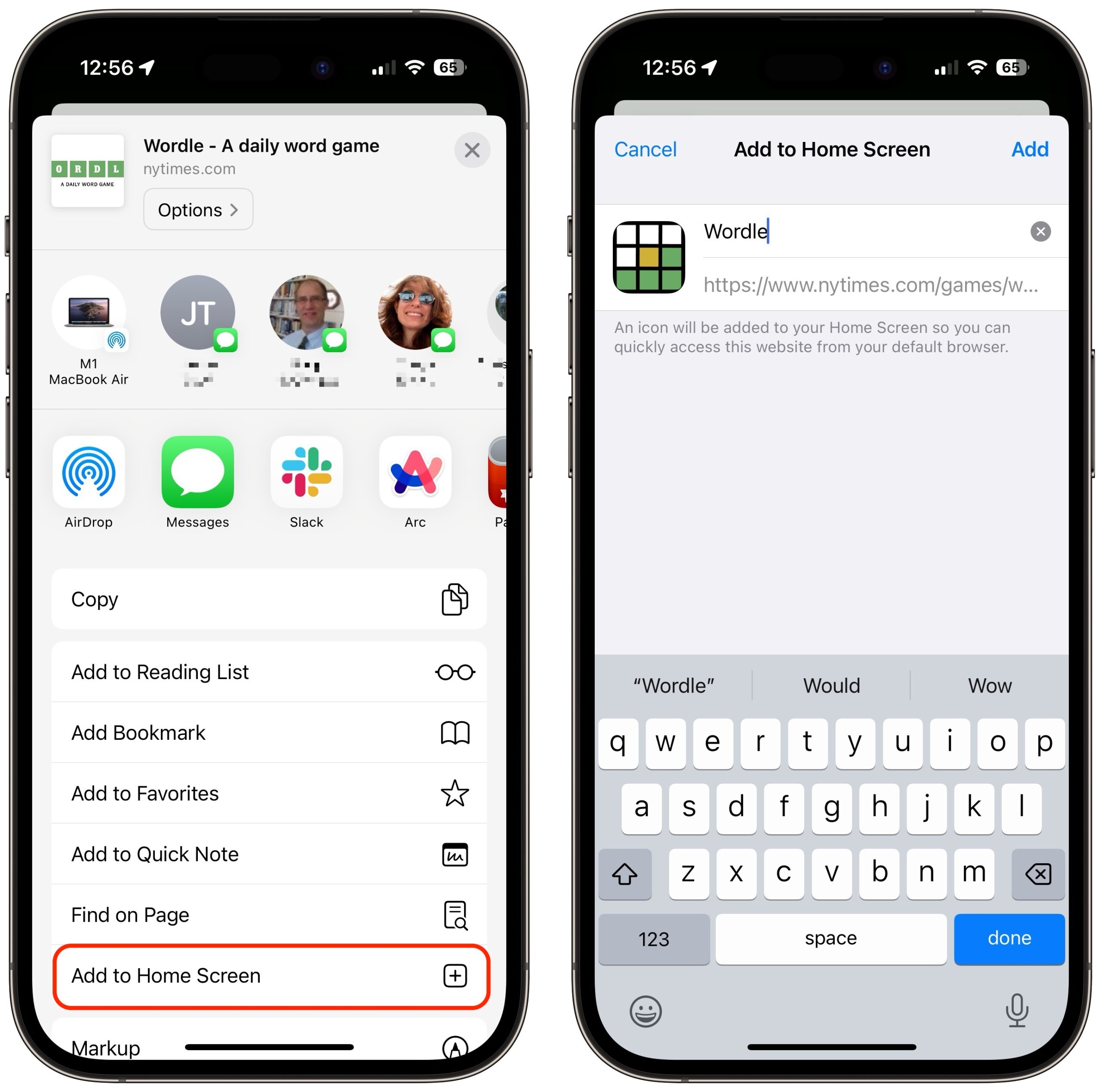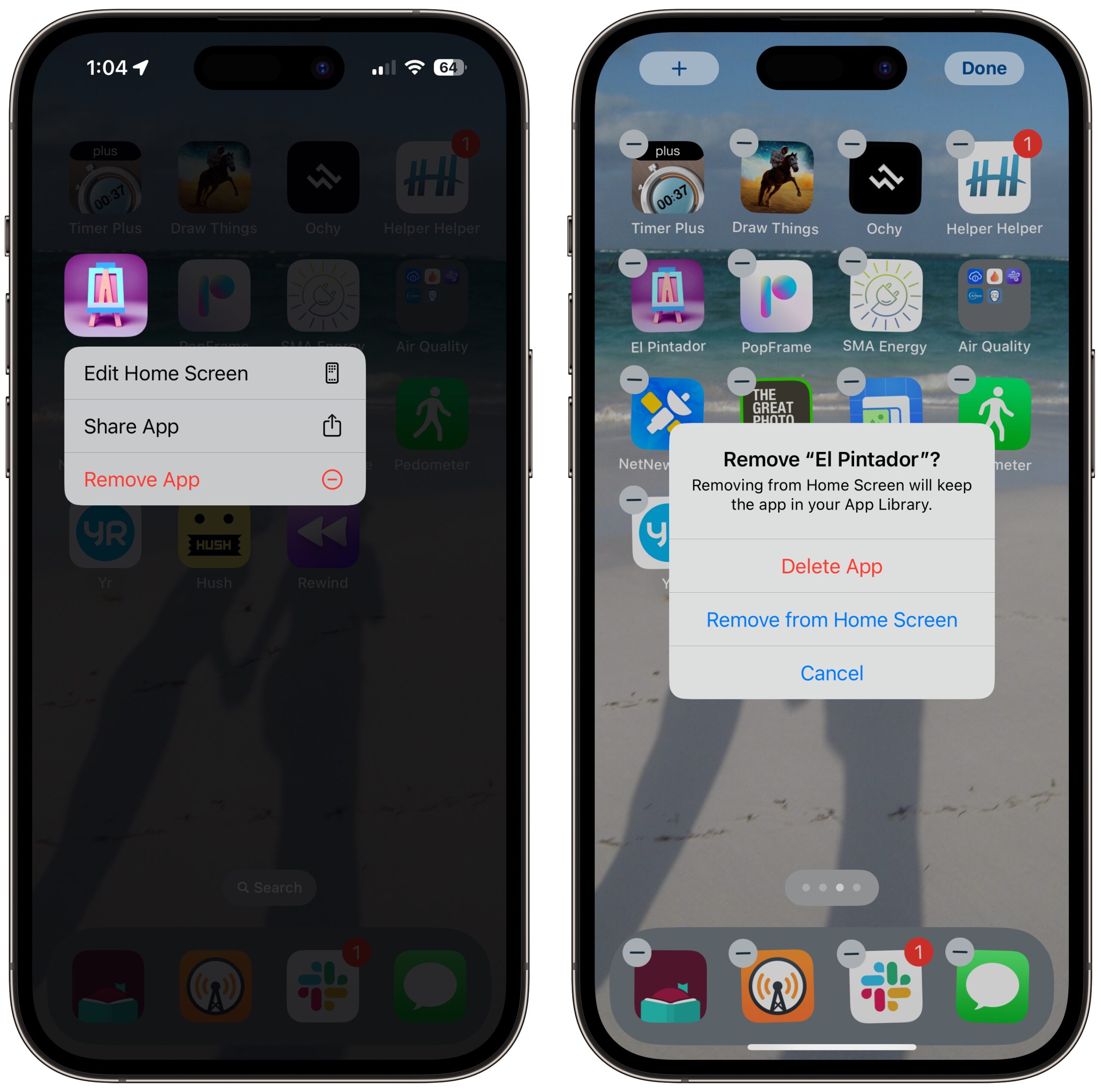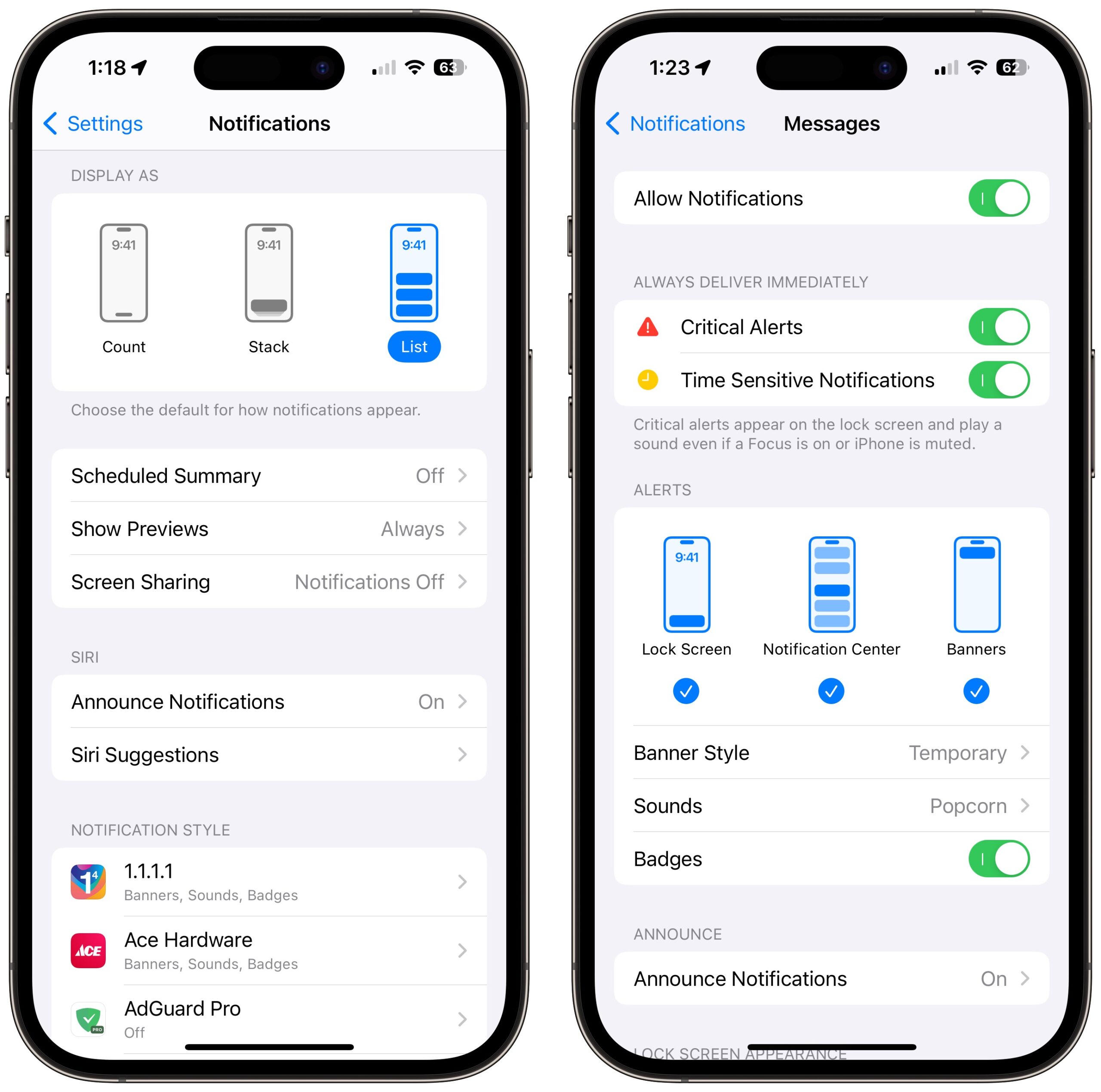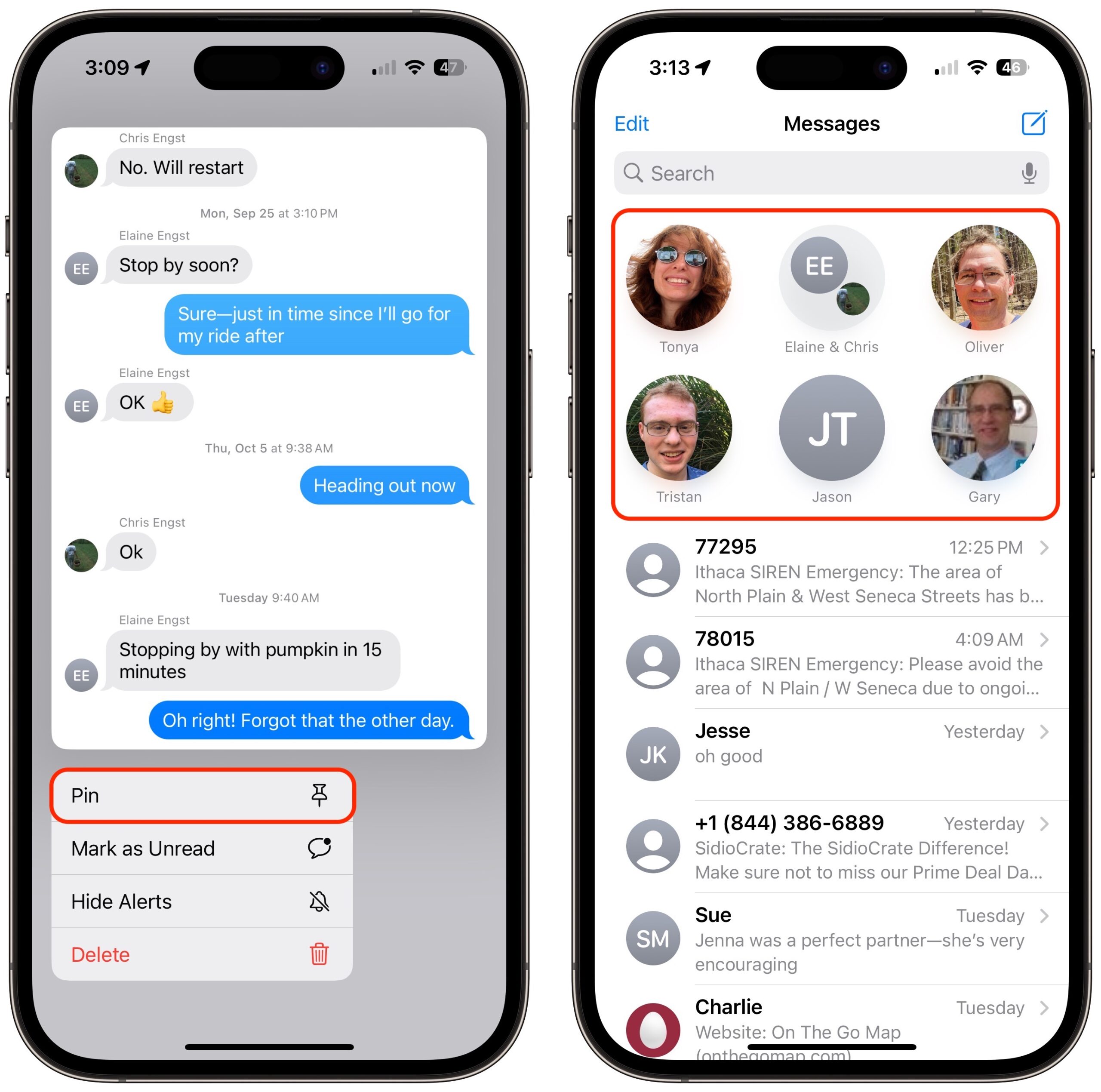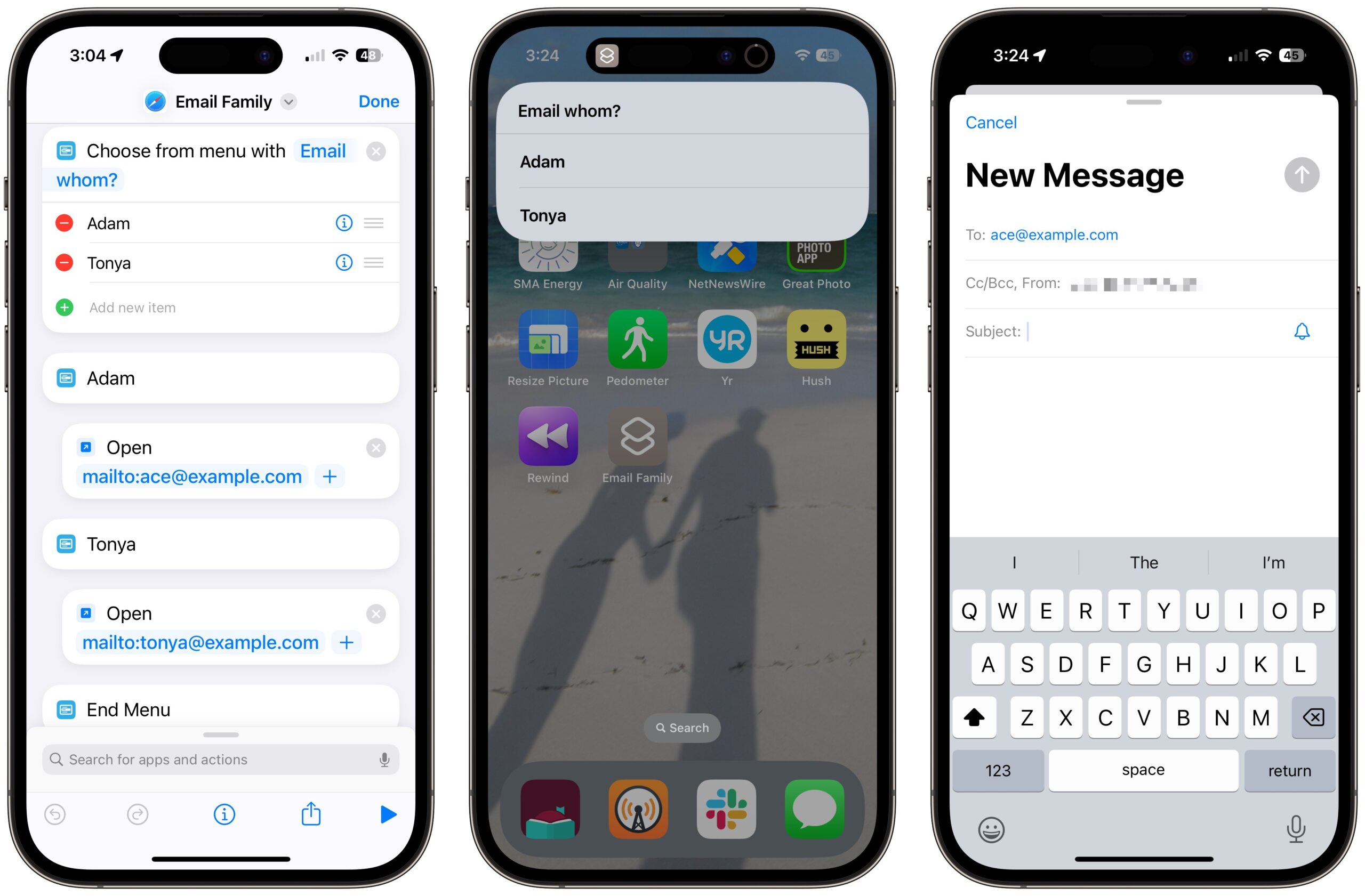MacTalk
October 2023
iPhone Recommendations for Senior Citizens
It’s a truism that we’re all older than we’ve ever been. But some may feel age more keenly, like older friends and family members whose physical and cognitive capabilities have declined slightly or quite a lot. I remember giving my grandparents Bernie and Estelle an old-even-for-then Macintosh SE/30 back in the mid-90s and upgrading both them and my other Grandma Helen to gumdrop iMacs not long after. But after Grandpa Bernie died, my Grandma Estelle, though sharp as a tack, couldn’t physically use a keyboard, and she was denied the pleasure of directing him in exactly how to use it, just as she’d been his navigator on car trips for decades. As Grandma Helen started to succumb to dementia, it became ever more difficult for her to remember how to use the iMac, and we eventually took it away to reduce the distress it caused her (and us).
Nowadays, the devices in question are less commonly Macs and more often iPhones and iPads. That transition has prompted several valuable discussions in TidBITS Talk, one asking which iPhone model would be best for an 84-year-old who isn’t tech-savvy, and another looking for recommendations to simplify the iPhone interface for an 81-year-old who is starting to find his iPhone overwhelming. I’m attempting to distill into this article the best advice from those discussions, with added information from my experience helping older friends and family members with their iPhones.
It’s important to note that older users may require more accommodation than younger users. They usually know what they want, but they’re more likely to have physical limitations (like low vision or arthritis in the hands), their level of technical experience can vary more widely, and they need good reasons to learn new things. What works for one person may be inappropriate for another. If you’re helping someone pick out or set up an iPhone, listen carefully to what they say they want and combine that with what you know about their strengths and weaknesses. Try to introduce new things—like Check In; see “iOS 17’s Check In Feature Provides Peace of Mind and Could Even Save Lives,” 9 October 2023—by explaining how it will answer a desire they already have. That said, if they choose something you don’t know how to troubleshoot—like an Android tablet—you should clarify that you’ll be at sea, too.
Please don’t take offense at anything here—of course, not all older people have problems with technology! Physical and cognitive capabilities vary widely among people of every age—heck, our friend George Jedenoff turned 106 back in July, and he was going strong with his Mac back in 2019 (see “George Jedenoff: A 101-Year-Old TidBITS Reader,” 17 June 2019, and “102-Year-Old George Jedenoff Publishes His Autobiography,” 26 August 2019).
The Best iPhone for Senior Citizens
This TidBITS Talk discussion started with Gerald de Haan asking for advice on getting a new iPhone for his 84-year-old mother, who is accustomed to an iPhone with a home button and Touch ID and lacks a technical bent. He worried that an iPhone relying on Face ID would require her to learn too many new gestures. Others in the discussion agreed.
For instance, with Face ID, you swipe up from the bottom of the screen to return to the Home screen from an app, which is less obvious than pressing the home button on an iPhone with Touch ID. Another significant difference is that Touch ID users would be accustomed to swiping up from the bottom to display Control Center, whereas with Face ID, you open Control Center by swiping down from the top-right of the screen.
Because we all rely on familiar interface interaction patterns—essentially muscle memory—the “best” iPhone will usually be the one that’s the most like the previous one. In Gerald’s case, that would be a third-generation iPhone SE, which has the added benefit of being Apple’s least expensive model. In contrast, if the person in question has already grown accustomed to Face ID, it’s best to stick with one of those models if it fits their budget. Keep in mind that Apple sells previous-generation iPhones—new and refurbished—for hundreds less than the current models, which can help the pocketbook, too, with little to no loss of core features.
Although familiarity is good, remember you should ask the person what they want and combine that with what you know about them. JKBull’s 95-year-old mother just upgraded from an iPhone 8 with Touch ID to an iPhone 15 with Face ID. For her, the big win was moving from a 4.7-inch screen to a 6.1-inch screen, enabling her to jack up the font size to where she could read it easily and have more screen territory. As much as I consider the Plus and Pro Max models ludicrously large, their 6.7-inch screens could be even better than the 6.1-inch screen for someone with low vision. Settings to explore for such people include:
- Settings > Display & Brightness > Text Size lets you boost text size in apps that support Dynamic Text.
- Settings > Display & Brightness > Bold Text makes all the text on the iPhone darker.
- Settings > Display & Brightness > Display Zoom > Larger Textbumps up the text size on the Lock Screen and Home Screen and in many apps, and it makes Home Screen icons larger.
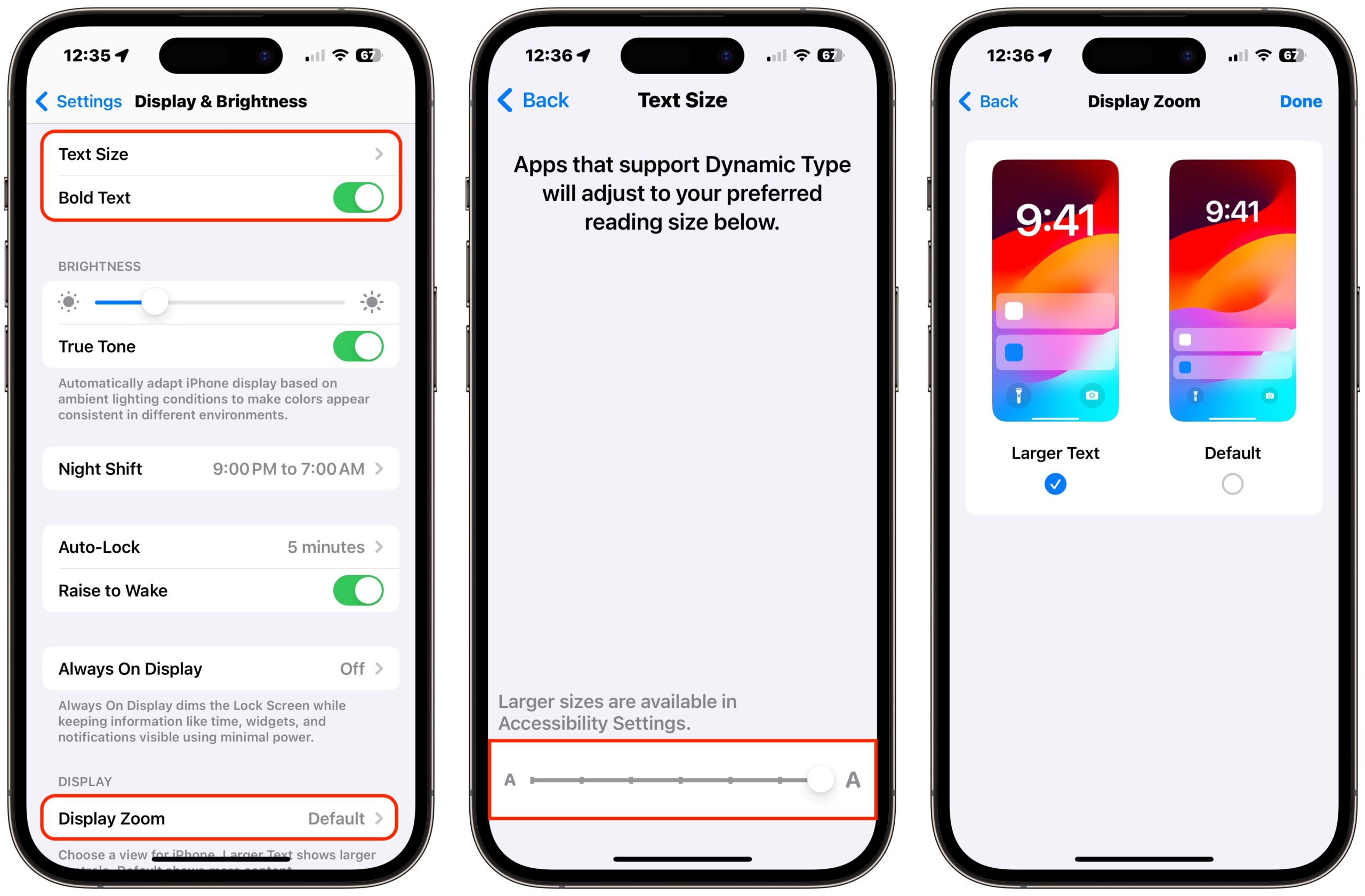
- Settings > Accessibility > Display & Text Size > Larger Text provides a switch for Larger Accessibility Sizes that give you even larger options for the Text Size slider.
- Settings > Accessibility > Display & Text Size has other useful options; consider enabling:
- Button Shapes, which can make it easier to determine when text is a button instead of a descriptive label
- On/Off Labels, which can make it a little more clear when a switch is on or off
- Reduce Transparency, which eliminates visual bleedthrough of background interface elements
- Increase Contrast, which is helpful for those with reduced visual contrast sensitivity, which can stem from cataracts or other eye conditions and makes everything they see soft at the edges

- Settings > Accessibility > Zoom can be helpful for those who need portions of the screen zoomed, but it’s hard to use and can be confusing, so reserve it for those highly incentivized to learn it.
Apple provides a dizzying array of additional options in Settings > Accessibility, and it’s absolutely worth exploring them to see if any will be helpful. Remember that many come with added complexity, such as learning new taps, gestures, or button presses.
One last note. Betty Taylor said on TidBITS Talk that her parents had significant difficulty with iPhone touch screens in their final years because of changes to their skin. She gave them pen-style capacitive styluses to work around their fingers not registering.
How Best to Simplify an iPhone
As the iPhone and iOS have become more capable, Apple has had to bulk up interface options. For many of us, that’s good—no one may use everything Apple provides, but everyone can pick and choose. However, those who find the options too much to deal with or end up in unexpected modes because of inadvertent swipes might do better with a more straightforward interface.
On TidBITS Talk, Michael broached the question of how to help an 81-year-old friend who was never a power user and is finding his iPhone with Face ID overwhelming. This user needs email, WhatsApp, Safari (where he plays Wordle every day but has to search Google for it each time), Photos, and several banking apps. Suggestions came fast and furious:
- Add websites to the Home Screen.
- Move unused apps to the App Library or delete them outright.
- Arrange the most-used apps on the first Home Screen and Dock.
- Turn off all unnecessary notifications.
- Simplify access to frequently used chats, email recipients, and the like.
- Use dictation or, if available, a Mac or iPad with a keyboard for text-intensive tasks.
- Understand that communicating with young people may require learning new approaches.
Let’s look at each of these in more detail.
Add Websites to the Home Screen
Making Wordle, or any website, more accessible is simple: add it to the Home Screen. To do that, navigate to the desired page in Safari, tap the share icon, and tap Add to Home Screen. On the next screen, give the Home Screen icon a name (keep it short) and tap Add. Of course, in Wordle’s case, there’s also a NYT Games app that includes Wordle.
Remove or Delete Unused Apps
Another way to reduce complexity is to arrange the most used apps on the first Home Screen. If the person uses other apps occasionally, locate them on a second Home Screen, but demote apps that aren’t being used at all to the App Library or delete them outright.
Touch and hold on any app to bring up a popover with a Remove App option. You can also touch and hold any empty spot on a Home Screen to enter jiggle mode and tap the ⊖ icon to bring up a popover with removal options. I wrote instructions for simultaneously moving multiple apps to the App Library in “Manage iPhone Home Screen Apps in Bulk with iOS 14’s App Library” (19 April 2021).
Arrange Apps for Ease of Access
The order in which icons appear on the Home Screen may be important too, and a discussion might reveal whether the person would prefer the icons to appear in order of use, alphabetically by name, or by icon color.
Don’t forget that the most-used apps can, and usually should, appear on the Dock.
To move icons around, touch and hold an empty space on a Home Screen to enter jiggle mode, then drag icons to the desired locations. I recommend reading “Five Tips for Easier Rearranging of iOS Apps” (22 September 2020) for techniques to make this process easier.
Turn Off All but Essential Notifications
Notifications can also contribute to a feeling of being overwhelmed. Apple provides various ways of managing or reducing notification frequency, but they feel to me like they’re designed primarily for busy professionals. For those who just want a less interrupting iPhone experience, I recommend using Settings > Notifications to display notifications as a list (more visible than a stack), turn off Scheduled Summary (because it can be unclear why something would appear then), and turn on Show Previews (so there’s more context for why a notification appeared). Then, go through the app list and turn off notifications entirely for all but essential apps, like Messages. Obviously, what counts as an essential app will vary, so talk through what those might be.
Simplify Access to Frequently Used Conversations and Correspondents
Interfaces are easier to use when their elements are visible and don’t move. If you’re helping an older person simplify how they use their iPhone, you can lock down parts of Messages and Mail.
For Messages, ask with whom the person regularly texts and pin those conversations. Touch and hold a conversation and tap Pin in the menu that appears. An icon for the conversation then appears at the top of the list, making it more accessible than having to scroll through any other conversations below. Pins sync across devices linked by iCloud if they also have a Mac or iPad.
Other messaging apps, such as WhatsApp and Facebook Messenger, may have similar options. I categorically refuse to use them because of the harm done to individuals and society by their parent company, Meta, but not everyone can make that choice without losing access to important people.
For Mail, the problem often comes in addressing messages. You can trim contact lists so it’s easier to start typing a person’s name to add their address to the To line of a message. But if the person mostly sends email to a handful of people, I’ve whipped up a tiny Shortcut that you can download, edit with the desired names and addresses, and then add to the Home Screen. It uses just two actions: Choose From Menu and Open URLs, hard-coding the desired names in the menu and the appropriate mailto URLs in the menu details. (This last part was slightly fussy because Shortcuts wanted to work with variables. However, once I cleared the variable, it let me type the URL manually.) Once you’ve edited the Shortcut, use the down-pointing arrow menu at the top to rename it and save it to the Home Screen. Giving it a custom icon is left as an exercise for the reader. Tapping its Home Screen icon presents a menu of names, and selecting one creates a correctly addressed new message in Mail.
Use Dictation or Delegate Text-Intensive Tasks to a Mac or iPad with a Keyboard
Text-intensive activities, such as writing email, are challenging on iPhones for most of us, and that may be even more so for older people dealing with finger dexterity or movement issues. Although learning to tap the microphone button on the keyboard and dictating effectively may be difficult, the desire to communicate may outweigh the difficulty.
If they already have a Mac or an iPad with a keyboard, it may be worth helping them set it up for text-intensive tasks. (It’s highly unlikely to be worth purchasing another device and training the person to use it unless they’re already comfortable with routine keyboard use.) Email is the most obvious of such tasks, but even Messages may be easier for them to use on a larger screen and with a keyboard. And if anyone plans to emulate George Jedenoff and write an autobiography, a keyboard is almost certainly a must.
Understand Necessary Communication Compromises
Finally, it may be helpful to discuss new forms of communication. One thread of the TidBITS Talk conversation revolved around an older person not seeing any reason to text instead of emailing or calling. The problem is that it always takes two to tango, and one party or the other will often have to adjust their expectations and behavior to make communication happen fluidly.
For instance, if a grandparent wants to communicate with their grandchild, they may have to accept the need for text messages since many students won’t appreciate (or pick up) a phone call and may ignore most emails. Similarly, with communications being much more fluid today, engaging with frequent short messages or calls can be a good way to keep younger relatives from worrying.
Other Recommendations?
Again, I pretend no special insight into the needs of older iPhone users beyond what I’ve experienced with my parents and in-laws, and they get by just fine. (Although iPhone questions are guaranteed whenever we get together—luckily, I can usually figure out the answer.) So, if you help an elderly friend or family member with their iPhone, let us know in the comments what the situation is and which techniques you’ve found particularly effective.
Contents
Website design by Blue Heron Web Designs

